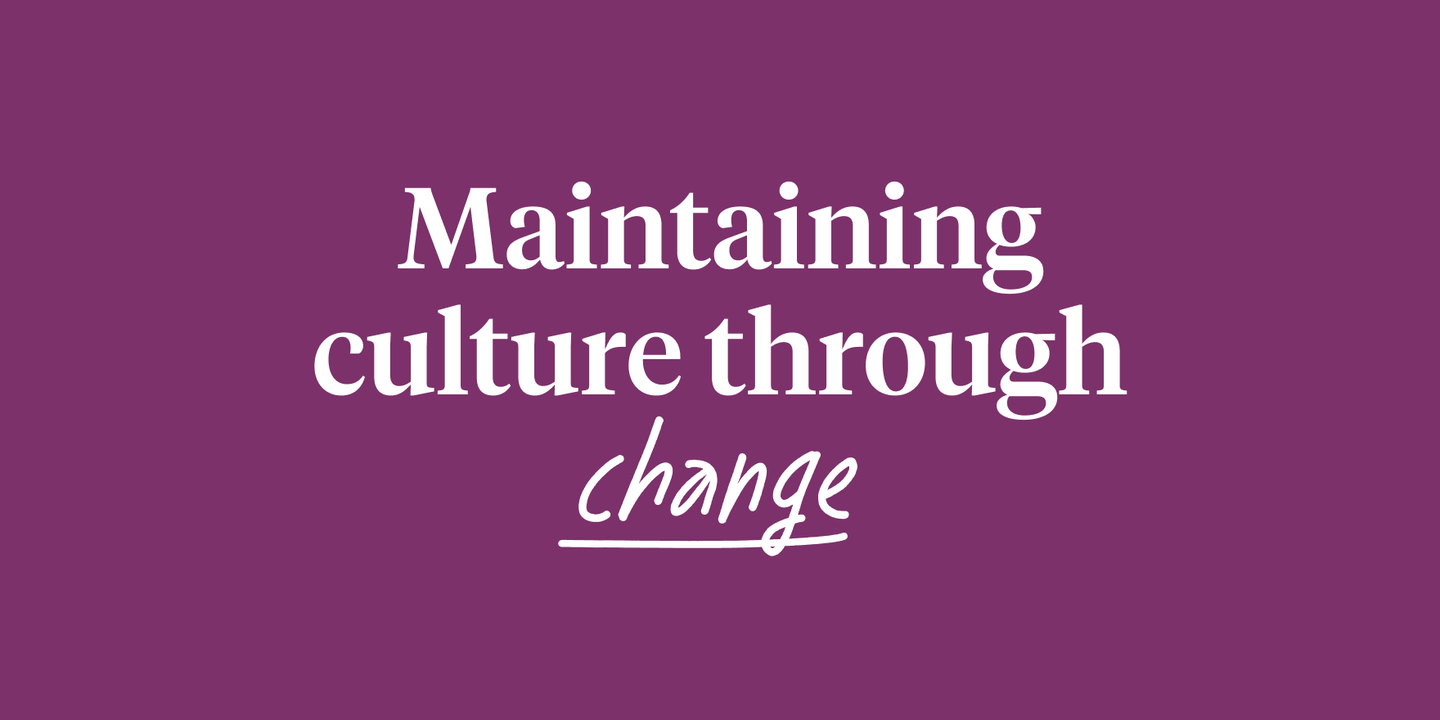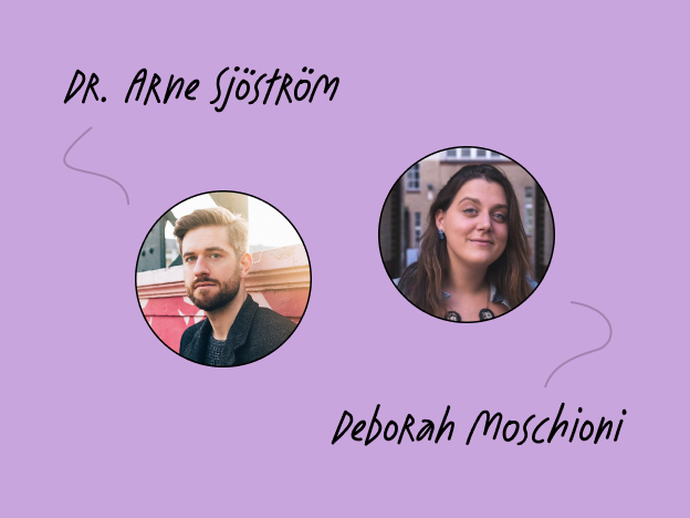How to prioritize and maintain company culture during periods of change

The pandemic has had a profound impact on the modern workplace in the last year. Nearly overnight, the pandemic made remote work the new norm, and it accelerated the digital transformation of many businesses. But, it also forced many people out of a job or added more work to their plates. That paired with feelings of isolation and uncertainty has led to increased anxiety, stress, and depression among employees.
More than a year into the pandemic, it’s clear certain aspects of our new normal will stick around long after we return to the office. Now is the time for HR teams to listen and react to what their employees want to adapt their culture to the new realities of the modern workplace.
Putting culture first through times of change is not easy, but as Culture Amp’s Founder and CEO Didier Elzinga put it, “If you don’t deliver on your culture in a crisis, then your culture meant nothing to start with.” Periods of great change are the most crucial time to be listening and acting on employee feedback, understanding employee pain points, and reacting to them in real-time. And, the costs can be extremely high if you don’t.
Here’s how to stay future-focused and adapt your culture to the new realities facing the modern workplace. From building meaningful social connections with employees even as we continue to work remotely to protecting workers’ wellbeing in trying times, here’s how to adapt your culture to change in a meaningful way.
Social connection
Since the start of the pandemic and the abrupt shift to remote work, more employees than ever feel disconnected from their teams. While physical distance and lack of meaningful facetime obviously play a role in this divide, employees might feel cut off if they were furloughed or had a reduction in work hours. Otherwise, employees might be feeling burnout from an increased workload or just tired of working from home.
“We really underline the importance of using 1-on-1s not only for operational topics but also to build connection,” said Deborah Moschioni, Head of HR at Coffee Circle. “Connection comes from being vulnerable with one another, from sharing experiences, and from asking questions with genuine curiosity. We encourage managers to use 1-on-1s to drive action and build trust.”
How can you improve social connections at your company?
Start by planning more spontaneous check-ins that are less task-oriented and more focused on socializing and sharing experiences. You might also consider adding “video co-working sessions” for your team or video conferences that attempt to recreate the in-person office experience, letting people do their work in the background and take breaks to chat with coworkers, as desired.
Trust
The employee/employer relationship is based on a set of unwritten rules. Employers agree to keep employees safe, provide them the resources they need to complete their job, give them development opportunities, and foster a culture that makes them feel valued. Failure to fulfill the “psychological contract” can lead to strong negative reactions. Unfortunately, under the constant threat of layoffs and job security still uncertain, employees will likely feel the contract is not being met and will need that trust to be rebuilt moving forward.
There are two key pillars to building trust with employees: listening and responding.
-
Listening
Listening lets you understand what their current experiences and concerns are. This helps you identify which aspects of your culture matter most to your employees. To listen to your employees and understand their needs, your company should launch regular feedback surveys, your managers should encourage their teams to share concerns in 1-on-1 conversations, and your people leaders should use team meetings to understand employee realities. -
Responding
Listening is only meaningful if you take action to improve on what you’ve learned. Once you’re aware of an issue, you must act on it and work to shift your culture when necessary. This step is crucial for establishing and building trust with employees as it shows them you genuinely care about their feedback and want to improve their overall experience at your company.
How can you build trust with your team?
Trust starts with strong, consistent communication. Maintaining transparency and addressing and discussing uncomfortable topics together as a team is essential to quashing gossip and keeping people calm even in the face of uncertainty.
In that vein, companies need to empower their managers to have these conversations with their teams. This might look like supplying them with the information necessary to answer employee questions and sharing how broader company changes may affect their respective teams. This helps managers spread facts, not misinformation.
“It’s important to listen, ask the right questions, and take the time to act and to communicate your intentions. That’s the core to building trust. The way in which you do it depends a lot on your company. We do surveys and have team leaders bring up certain questions in 1-on-1s,” stated Moschioni. “You want to make sure that these conversations are happening and that listening to others is a constant habit.”
Wellbeing
Jobs are more than just a salary. Most people derive some degree of self-worth and identity from the work they do. For many employees, the pandemic has had an enormous impact on how they work and whether they have a job. Many workers have been laid off, furloughed, or had their hours reduced since the beginning of the health crisis, which can be a huge source of anxiety, stress, frustration, and self-doubt. Of those whose jobs were left intact, roughly 1 in 3 employees say they feel guilty having a job when their colleagues were laid off or furloughed.
What steps can you take to improve employee wellbeing?
Focus on recognizing and supporting employees when they need it. Your employees have been through a lot in the last few months, and they deserve to feel their contributions have been seen and appreciated. Be sure to publicly and privately acknowledge employee efforts and accomplishments to show them you care about and recognize their continued hard work. Also, make sure to call out even small wins and make time to come together and celebrate as a team.
Next, give your employees the support they need to make it through these challenging times. One way to do this is to give managers the skills they need to coach and guide employees through change. Culture Amp’s Skills Coach and 1-on-1 conversations tools give managers the knowledge they need to support employees, address wellbeing, and build more resilient teams.
“We use Culture Amp to listen, act and react to employee feedback. When you receive this feedback, your need to communicate what you’re doing to address employee concerns and pain points. Communication is essential to build trust,” said Moschioni.
When an April 2020 Culture Amp pulse survey revealed Coffee Circle employees were feeling anxious and insecure as the reality of the pandemic set in, Moschioni and her team introduced new physical and mental health perks to help employees adjust to the change. The coffee company connected employees with mindfulness apps and virtual therapy sessions, and started daily step challenges to motivate them to stay active. “Of course, we keep giving people coffee vouchers so they can keep a little bit of our company in their homes as well,” she added.
Work through change together
While we still have no idea when the pandemic and its effects on the workplace will end, now is the time to double down on improving your company culture and ensuring your employees feel supported through any change that comes their way. You can change today what direction your company moves in tomorrow. It’s never too late to listen to employee feedback and take action to improve your workplace experience. It will help you deliver a more positive working experience now and set yourself up for success in the future world of work.

Start prioritizing your company’s culture today
Get tips on how you can adapt and strengthen your company culture during 2021 and beyond






